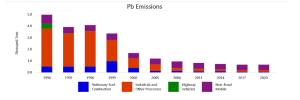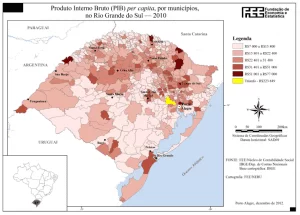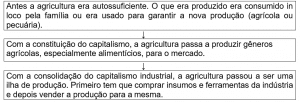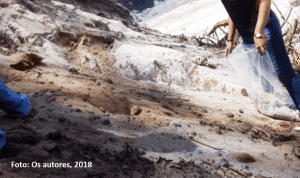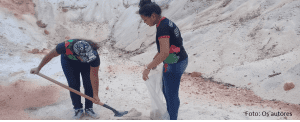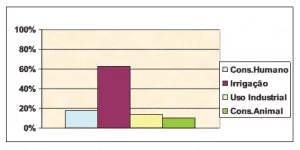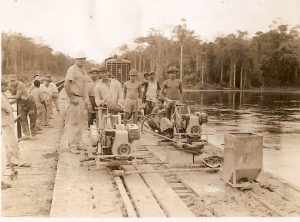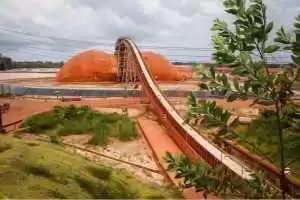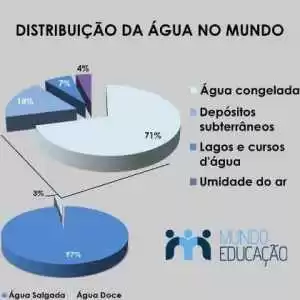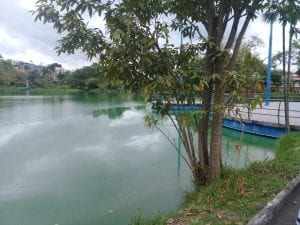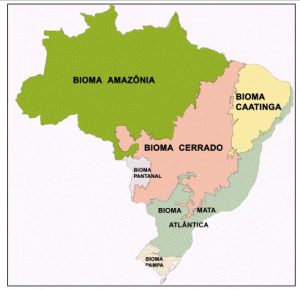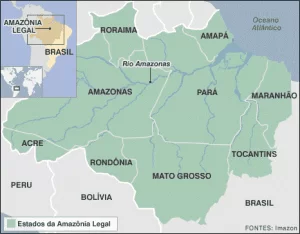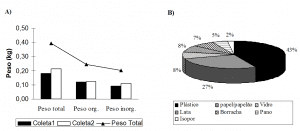ORIGINAL ARTICLE
ALMEIDA, Janilton de Lima [1]
ALMEIDA, Janilton de Lima. Environmental impacts caused by clay extraction in the municipality of Ibiassucê-BA. Revista Científica Multidisciplinar Núcleo do Conhecimento. Year 05, Ed. 09, Vol. 03, pp. 35-46. September 2020. ISSN: 2448-0959, Access link: https://www.nucleodoconhecimento.com.br/environment/clay-extraction
SUMMARY
Negative environmental impacts have increased dramaticly, causing the destruction of ecosystems. Environmental impacts are changes in the environment, caused by human activities, which affect health, safety, well-being of the population, socioeconomic activities, aesthetic and sanitary conditions of the environment. This research aimed to identify the main environmental impacts caused by clay extraction in the municipality of Ibiassucê-BA due to the industrial activities of potters. This is a descriptive-exploratory research with bibliographic review and in locus visit. Data were collected through analysis of photographs, visits, direct observations and semi-structured interviews and analyzed qualitatively. The extraction of clay, as a basic raw material for the pottery industries, brought several negative environmental impacts such as: ecological and agricultural imbalances, erosion, silting of rivers and lakes, deforestation. The environmental impacts caused by clay extraction in the municipality require the urgency in the development of environmental policies that soften the degradation situation. The performance of activities related to Environmental Education in the municipality is the way to foster changes in the way of exploring natural resources.
Keywords: Clay extraction, environmental impacts, Environmental Education.
1. INTRODUCTION
The current economic development model combined with the rapid growth of the population and the lack of Environmental Education have generated ecological ruptures that threaten the planet’s support capacity. Among the ecological ruptures, the negative environmental impacts resulting from the indiscriminate extraction of mineral resources stand out, one of these ruptures is the extraction of clay for the manufacture of ceramic products such as objects for civil construction such as block, tiles, tiles.
The municipality of Ibiassucê in the State of Bahia, is rich in clay, a mineral used as a raw material to supply and functional the pottery industries that manufacture pieces such as blocks, tiles and tiles for civil construction.
Ibiassucê, is located in the Homogeneous Microregion of Guanambi, in the Economic Region of serra Geral da Bahia, Southwest of the State, 630 km from Salvador, capital of the state and 47km from Caetité, headquarters of the administrative region. It has a population of approximately 9,427 inhabitants (IBGE, 2018). As one of the main economic activities, we highlight the ceramist industries that employs a significant amount of people. With this has developed the extraction of clay, the main raw material, to feed the pottery industries, without proper studies of impacts to know the socio-environmental repercussions of these activities.
In view of these activities, it became necessary to analyze the environmental impacts caused by clay extraction in the municipality of Ibiassucê-Bahia.
In the mid-1990s, a Ceramic Pole was inaugurated in the municipality, where the process of extraction of “clay” was intensified and concern for the environment was little manifested by the population and local authorities.
The land destined to the Ceramic Pole was ceded by the Municipality of Ibiassucê characterizing itself as a specific area for the construction of ceramic factories where it has a capacity to accommodate 07 industries. There are already installed in this location only 05 (five).
This research has as general objective, to identify the environmental impacts caused by the ceramist activity in the process of clay extraction, the main raw material of this type of industry. The specific objectives of the research are: to raise the environmental impacts caused by clay extraction activities; to verify in what order were the impacts caused by this activity, reflect on the need for an effective environmental education for local society.
The selection of exploration areas and the extraction of clays are carried out empirically and without supervision by the competent public agencies. On the other hand, the expansion of the market focused on civil construction throughout the State of Bahia, as well as the microregion to which the municipality of Ibiassucê belongs has caused the increase in the production of blocks, tiles and tiles that in turn has led to the exploration of new areas for the extraction of raw materials to meet the demand for production..
Thus, the production of these products has become increasingly a profitable activity for the owners of the Ceramistas Industries and has implied the need for studies on the subject in the region, thus motivated to carry out the present work.
The study was carried out in clay mining mines in the rural area of the municipality and in ten ceramic industries, in which five of them are part of the Ceramic Pole, implanted in the mid-1990s, on land granted by the municipal government located on highway 030, near the headquarters of the municipality.
2. CLAY EXTRACTION AND ENVIRONMENTAL IMPACTS
Mining activity is a strong instrument of environmental degradation, especially when practiced in a disorderly and irregular manner (MECHI and SANCHES, 2010). In this sense, the municipality of Ibiassucê-BA, due to its industrial activities related to the production of blocks, tiles and tiles intended for civil construction manufactured by the Ceramist Industries has been presenting a process of environmental degradation in the areas of clay extraction, which serves as a basic raw material for these companies.
“Clay can be defined as a earthy material, of very fine granulation, which acquires plasticity, when moistened with water” (PORTELA and GOMES, 2005, p. 02) The popular name of this mineral resource is the “clay” usually found in sedimentary lands, in valleys and residual lands.
According to (MECHI and SANCHES, 2010) Clay extraction in alluvial flat terrain is one of the most impactful forms of mining, because it is carried out in the open and in areas close to water resources. Through an integrated analysis of the landscape it is possible to understand the damage caused by the exploration of clay and launch proposals aimed at the application of measures that reduce environmental degradation and allow the use of the area in future activities.
It is known that currently, there is great concern with the issues related to the degradation of the environment caused by the activities of the capitalist world, especially the one of industrial origin. According to Kerry (2008)
The planet is in crisis. In all industrialized nations, and especially in the United States, evidence shows that we live in a world so immersed in toxins that they have paved the way to the ground, air and water, not counting our bodies, from conception to death. (KERRY, 2008, p. 29)
In this sense, the concern to develop research of this nature, raises a desire to identify the areas impacted by mining activity, in the specific case, the extraction of clay due to the productive activities of the pottery industries.
The clay extractive activity has extensively and intensively degraded the area under study, in this case the points where it performs the exploitation of this resource, usually in the low, in alluvial and valley-shaped terrains, always associated with a water course such as river, lagoon, stream causing impacts on these resources beyond the soil, relief, air, as well as negative visual impacts by the aesthetic mischaracterization of the local landscape.
According to the National Council for the Environment – CONAMA,
Environmental impact is any change in the physical, chemical and biological properties of the environment, caused by any form of matter or energy resulting from human activities that directly or indirectly affect: the health, safety and well-being of the population; social and economic activities; the aesthetic and sanitary conditions of the environment and the quality of environmental resources. (BRASIL, 1993)
To study the environmental impacts is mainly to evaluate the consequences of some actions, so that there can be the prevention of the quality of a given environment that may undergo the execution of certain projects or actions, or soon after their implementation.
According to Sousa (2000, p. 88-89) “For the Environmental Economy, environmental quality is considered as a good that provides utility to individuals and, therefore, is treated as the other assets of the economy”.
It is known that for human society to survive it is necessary to use natural resources, so here is the question of whether natural resources are treated as essential for human survival. What is discussed in this work is to reconcile with nature, sustainability, recovery projects of areas degraded by clay extractive activities with environmental responsibility, based on legality, in the realization of environmental licensing to carry out such activity.
Mineral extraction, and specifically clay, is a widely developed activity in Brazil and the municipality of Ibiassucê, because the presence of pottery industries has grown considerably.
The industrial production of ceramic parts for civil construction has been characterized as one of the main economic activities of great employability, second only to subsistence agriculture, which sustains the majority of the municipal population.
Given the issues reported, the environment suffers some impacts with this productive dynamics, and measures to improve quality of life and environmental degradation in the municipality are necessary. For this it is necessary to carry out studies related to the various environmental problems and the consequences of local industrial activities.
For Jacobi (2003),
Reflecting on environmental complexity opens up a stimulating opportunity to understand the gestation of new social actors who mobilize for the appropriation of nature, for an educational process articulated and committed to sustainability and participation, based on a logic that privileges dialogue and interdependence of different areas of knowledge. (JACOBI, 2003, p. 191)
In this sense, environmental education and the process of raising awareness of the population about the need to take care of the environment, so that it provides support to the populations if they are urgent. An educated society is able to decide, plan and be aware of the consequences of its actions on the environment.
3. CONTEXT AND PROCESS OF STUDY
3.1 CHARACTERIZATION OF THE STUDY AREA
The municipality of Ibiassucê (Figure 01) is located in the Homogeneous Microregion of Guanambi, Economic Region of the Serra Geral of Bahia*. With an area of approximately 380km2, the municipality is 630km from Salvador – State Capital, and 47 km from Caetité headquarters of the nearest Administrative Region.
Figure 01 – Characterization of the Municipality of Ibiassucê
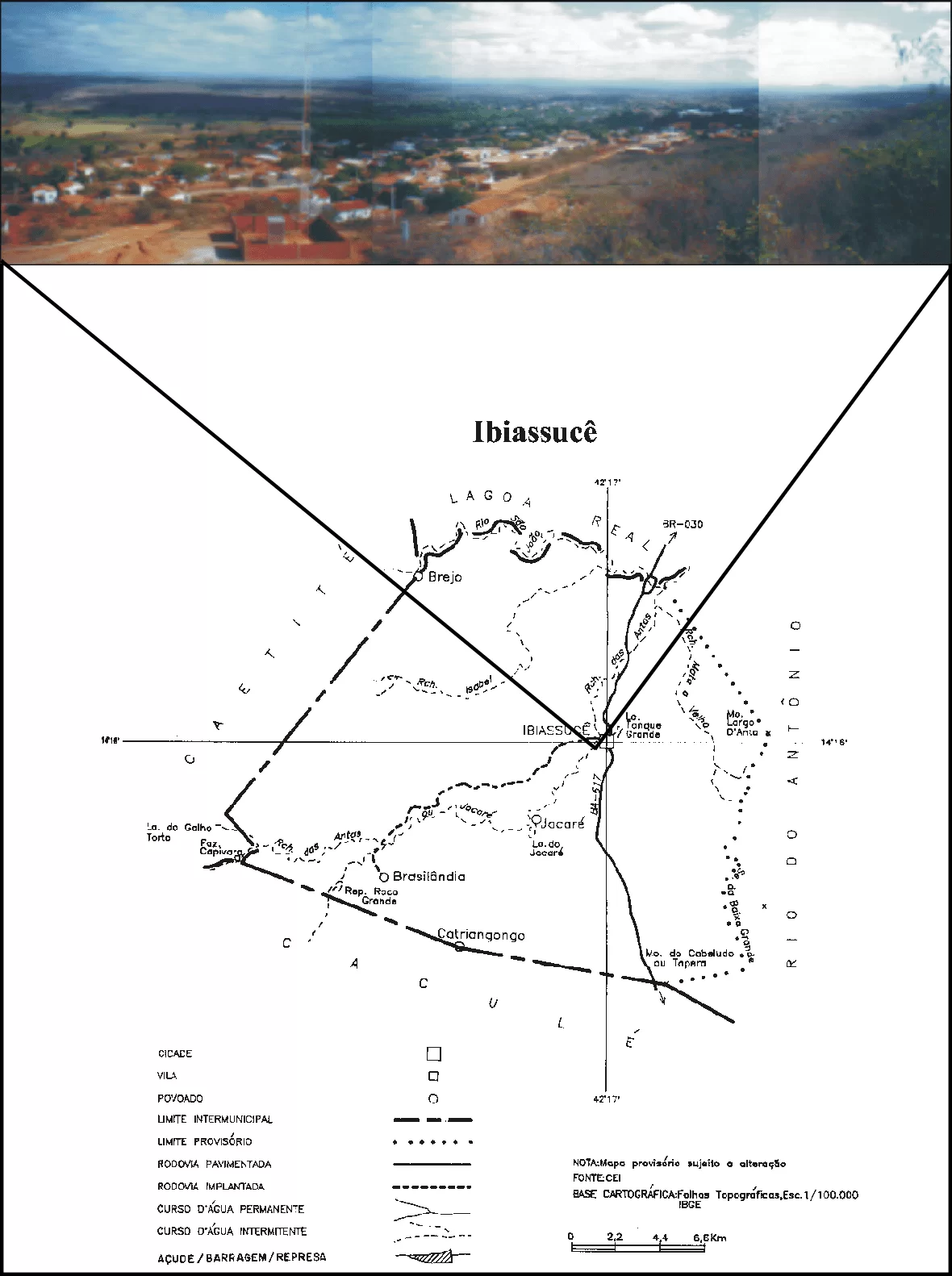
Source: Compilation of the author[2]
3.2 METHODOLOGY
The present work is a descriptive-exploratory research, with bibliographic review, in locus visits, semi-structured interviews with workers of the mining mines, residents of the communities and comparative analysis of photographs, of the environments studied in which they are used for the extraction of clay as raw material for the ceramic industries.
3.3 COLLECTION INSTRUMENTS
The instruments used in data collection were photographic images, reports through semi-structured interviews with people directly and indirectly involved in the activities of extraction and production, in addition to the research in journals by CAPES and google scholar.
The interviews were conducted with the population living near the clay exploration areas located in the rural area, mainly in the communities of Juazeiro, Pajeú and Olhos D’água all located west of the municipality’s headquarters. An interview was developed with the Secretary of Agriculture and Environment of the municipality.
The data obtained were analyzed qualitatively.
With workers to obtain information on the method of exploration of clays, the production of blocks, tiles and tiles, numbers of employees and the locations of obtaining the raw material.
On the other year, the interviews with the residents were aimed at obtaining information about the problems caused by the exploration of clay in the quality of the environment and their lives.
The study included the identification of environmental and socioeconomic impacts, considering the positive and negative ones, where the positive impacts refer to beneficial and negative results when they produce damage to the environment.
The first part was dedicated to research planning, definition of the subject, choice of theme, delimitation of the theme, search for sources and rationale, elaboration of the objectives and justification of the project, the methodology appropriate to the research, as well as the instruments to be used during the work.
The next step in the work was the execution of the research itself, the definition of the areas to be observed and studied in the municipality, formulated the hypotheses of the research; data and information were collected through visits, observations, photographs and interviews. It sought to justify the hypotheses by proving or refuting their validity.
Following the next step of the development of the work, the collected data were verified, critically analyzed the data, deduced and created meanings, comparations and tests, classification, argumentation and presentation of the results that are presented below.
Finally, the work was concluded by showing the results obtained, verifying the theories, deducing causes and consequences.
4. RESULTS AND DISCUSSION
The ceramist companies of the municipality of Ibiassucê were founded in the second half of the 1990s, when the municipal government granted land for the implementation of a Ceramic Pole in the municipality.
Also through interviews and conversations with current entrepreneurs in the field, before the foundation of the Ceramic Pole there was only one ceramist industry and some handmade ceramics that made bricks in the municipality. Knowing that it was a region with a significant amount of clay to be exploited, the government together with a group of entrepreneurs decided to invest in the branch.
Through direct observations, the use of photographs and interviews, it was found that among the negative impacts stand out erosion, silting, soil denudation and soil compaction.
Because of the removal of vegetation for the process of excavation and removal of clay, part of the local soil is unprotected causing compaction processes in certain situations and leaching by another. “Soil leaching is an erosive process caused by the washing of the surface layer by the flow of surface water” (RIBEIRO, 2020).
Once the leached soil becomes unsuitable for agriculture, so the land that is used for clay extraction ends up being abandoned by the owners, who survive from subsistence agriculture.
Moreover, the place where the extraction of clay takes place, there are huge open-air craters, which do not go through a recovery process, that is, these craters should be covered by tailings, a surface layer of soil with organic matter that is removed from the site and does not serve for the construction of ceramic parts for civil construction. The result is that these craters flood with rainwater, and at the time, this water is not good for the community, because it is muddy, unfit for consumption as seen in figure 02 below.
Figure 02 – Flooded open-air crater caused by clay extraction at Grama Farm. Ibiassucê-BA
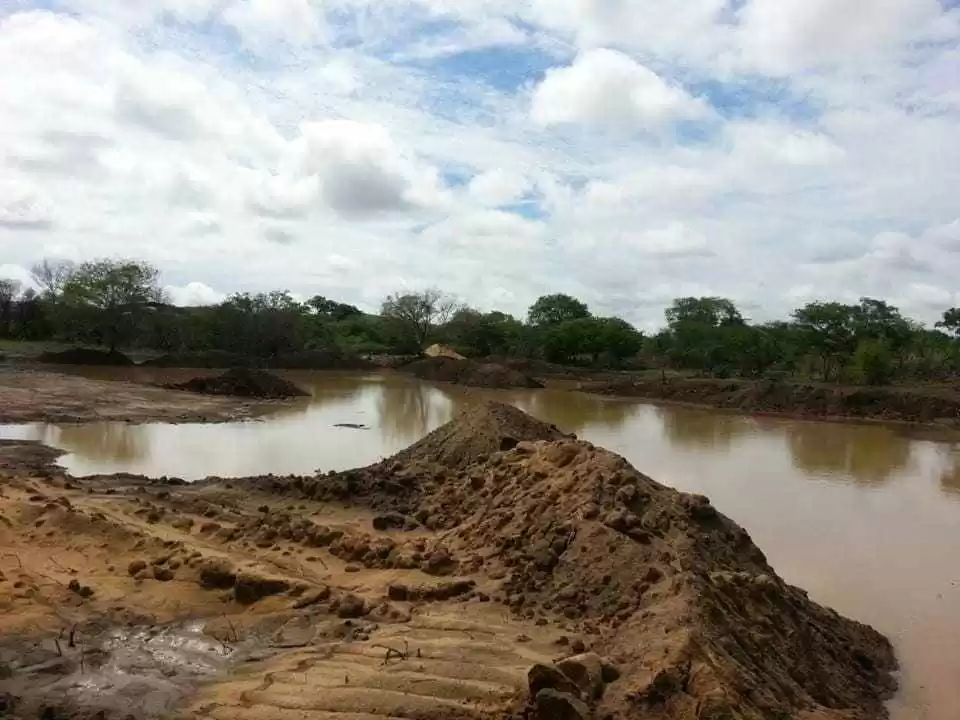
Source: The Author (2019)
The process of exploration of clay in the extraction sites is done completely irregularly, since it does not obey the distance from the river beds, causing the slopes to collapse, resulting in the silting and felling of the riparian forest, contributing to these water resources becoming drier.
When extracting clay, the pottery industries throw the tailings, that is, the superficial part of the soil that is removed, in the riverbed. Where it takes the clay is a crater without any plant protection as seen in figure 02 above, causing the area to become inhospitable for the development of vegetation. The tailings are thrown into the river and when the flood comes in the rainy season it is swept away by the current of the water contributing to the silting of these and the lagoons.
The environmental impact is visible, a completely degraded environment, without any care. Some of these impacts can be seen through figures 03 to 06.
Figure 03: Tailings thrown into the riverbed
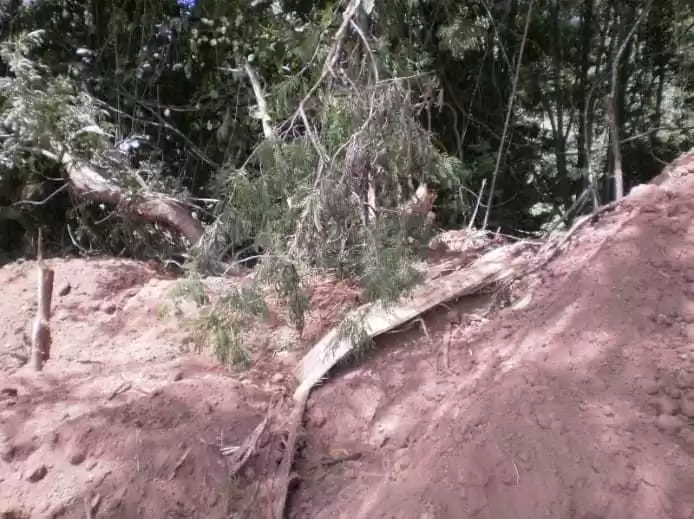
Source: The Author (2019)
Figure 04: Removal of the surface layer of the soil
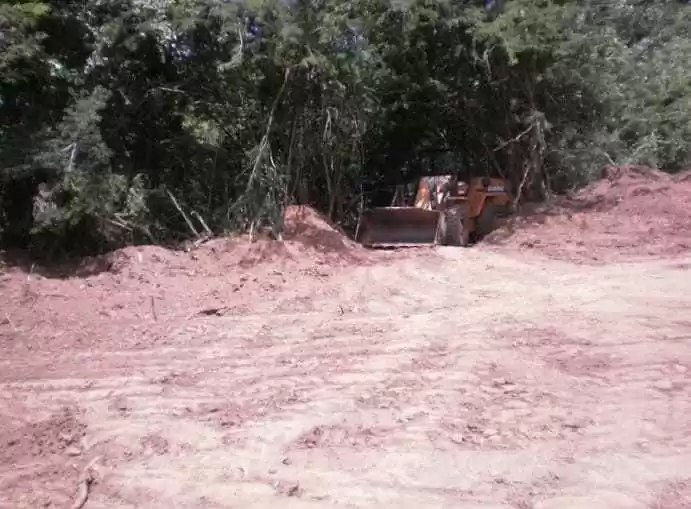
Source: The Author (2019)
Figure 04: Removal of riparian forest
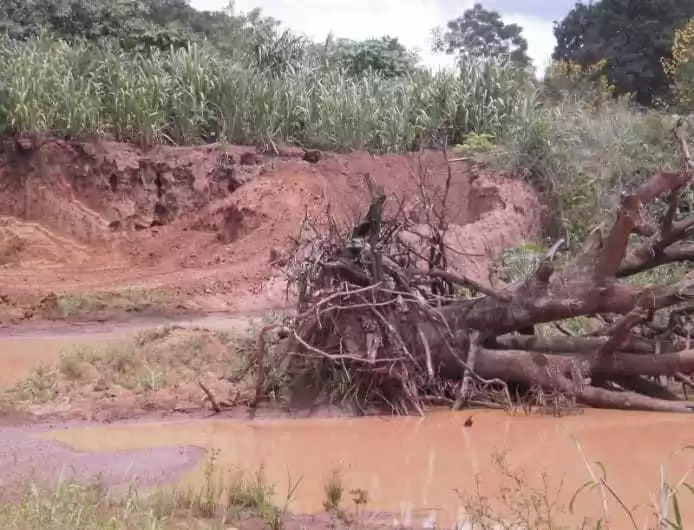
Source: The Author (2019)
Figure 05: Removal of clay in a riverbed
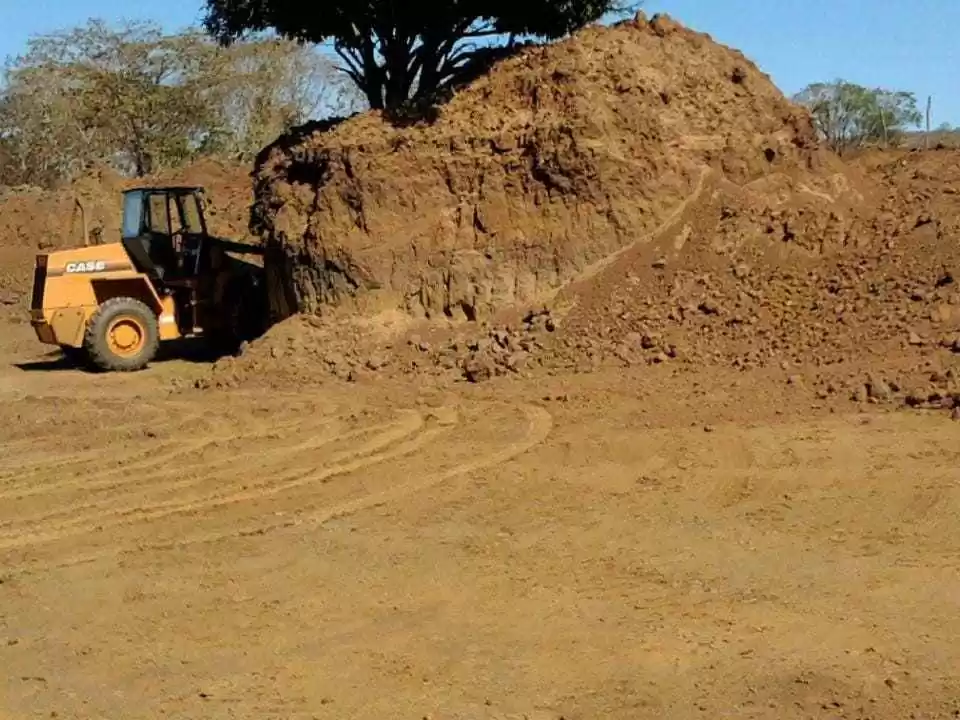
Source: The Author (2019)
Observing the impacts demonstrated in the photos, it is verified that soil losses, the silting process and the destruction of riparian forest is clearly verified that these impacts are actually happening in the regions where the clay extraction activity is done.
Appropriate measures to date are not taken so much of those responsible for the destruction by both public supervisory bodies. It is known that it is an activity that generates income and employment for the population, but it is necessary to develop new strategies so that the environment is not destroyed without any scruples.
Through conversations and interviews some people reported that where clay is removed, it can no longer make plantations of groceries, that is, the land becomes unsuitable for agriculture. The alluvial lows become unproductive due to the lack of moisture by the removal of vegetation, and by soil compaction, mainly by the machinery used in the exploration work, left in the open without any recovery process.
FINAL CONSIDERATIONS
The extraction of clay in the municipality of Ibiassucê-Bahia is considered a profitable activity that generates income. But the extraction process is done without concern for the recovery of the areas from which the clay material is removed. In this sense, the process of exploiting this resource causes a number of environmental impacts.
Among these impacts there is a positive, which is income generation. The others were negative as: silting of rivers and lakes, removal of riparian forest, compaction of the soil, open-air craters that are flooded with rainwater and unfit for human use. These impacts cause socioeconomic repercussions since it compromises the performance of agricultural activities in the areas in which they perform such extractive activity.
Therefore, with all the negative impacts caused by the extraction of clay for the pottery industries, it is indispensable to the implementation of Environmental Education in the schools of the municipality and in other segments of society, in order to sensitize, mobilize and consequently cause changes, especially with regard to the recovery of degraded areas, attribution of those who are responsible for the exploitation of mineral resources and reorganization of the forms of clay withdrawal in the municipality.
In Environmental Education there are possibilities to motivate people to transform the local reality in defense of quality of life, the environment with a view to citizenship and transformation both social and environmental, as well as economic, through sustainable actions.
REFERENCES
BAHIA, CENTRO DE ESTATÍSTICA E INFORMAÇÕES. Informações Básicas dos Municípios Baianos: Região Serra Geral. Salvador, 1994.
BRASIL, Conselho Nacional do Meio Ambiente – CONAMA. Resoluções, 1983.
GIL, Antônio Carlos. Técnicas de pesquisa em economia. São Paulo: Atlas, 1988.
JACOBI, Pedro. Educação ambiental, cidadania e sustentabilidade. São Paulo, n. 118, pág. 189-206, março de 2003. Disponível em <http://www.scielo.br/scielo.php?script=sci_arttext&pid=S0100-15742003000100008&lng=en&nrm=iso>. acesso em 24 de julho de 2020.
MECHI, Andréa; SANCHES, Djalma Luiz. Impactos ambientais da mineração no Estado de São Paulo. São Paulo, v. 24, n. 68, pág. 209-220, 2010. Disponível em <http://www.scielo.br/scielo.php?script=sci_arttext&pid=S0103-40142010000100016&lng=en&nrm=iso>. acesso em 24 de julho de 2020.
KERRY, John. Antes que a terra acabe: um relato real dos desafios ambientais. São Paulo: Saraiva, 2008.
PORTELA, M. O. B; GOMES J. M. A. Os danos ambientais resultantes da extração de argila no bairro Olarias em Teresina – PI. (Programa de pós-graduação em políticas públicas). São Luís – MA, 2005.
RIBEIRO, Amarolina. “O que é lixiviação do solo?”; Brasil Escola. Disponível em: https://brasilescola.uol.com.br/o-que-e/geografia/o-que-e-lixiviacao-solo.htm. Acesso em 18 de julho de 2020.
SOUSA. Renato Santos de. Entendendo a questão ambiental: temas de economia, política e gestão do meio ambiente. Santa Cruz do Sul: EDUNISC, 2000.
APPENDIX – FOOTNOTE REFERENCE
2. Photo of the author and map extracted from BAHIA, CENTER FOR STATISTICS AND INFORMATION. Basic information of the municipalities of Bahia: Serra Geral Region. Salvador, 1994.
[1] Master’s degree in Science and Mathematics Teaching, Specialization in Socioeconomic Training in Brazil, Media in Education and Environmental Management and Sustainable Development. Graduated in Geography, Biological Sciences and Pedagogy.
Submitted: August, 2020.
Approved: September, 2020.

